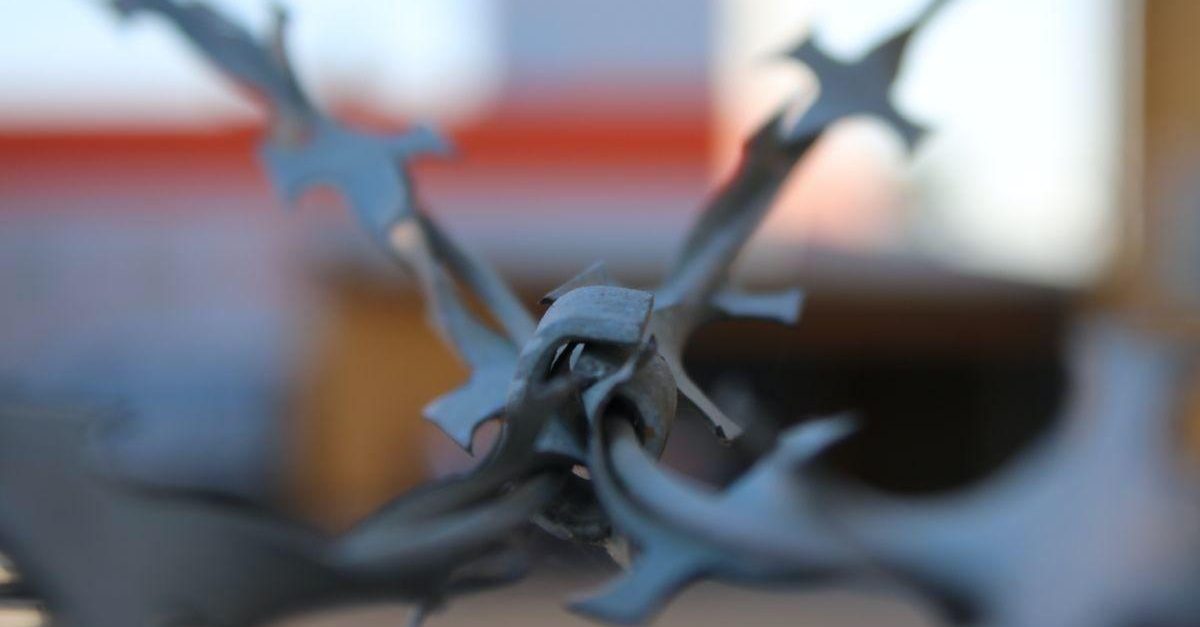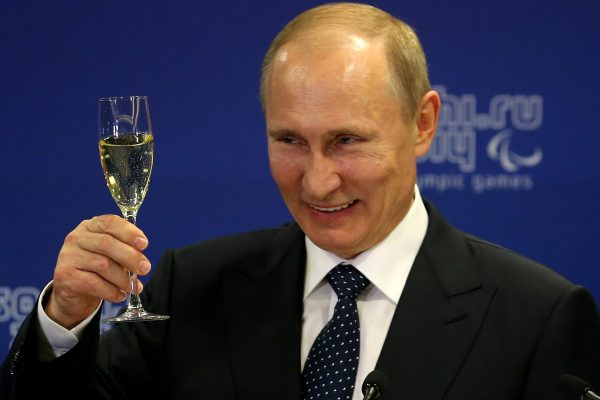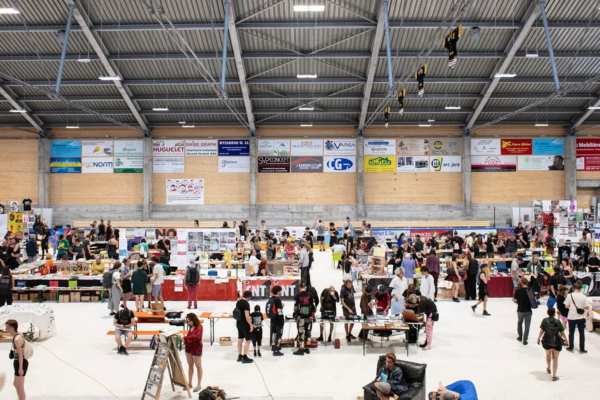Over the past 2 months we have gone through almost the entire book of possible tactics of non-violent resistance. Unfortunately, so far only Sunday protests have been able to strengthen on a permanent basis. The majority of other protest forms are now under control.
Working movement
In the first week the workers showed their political strength in the country. Images of Lukashenko’s humiliation at a meeting with workers in Minsk flew around the world. But the repression did not take long. Cops were sent to the entrances of factories and neither the support groups nor the workers were allowed to gather. Ideological work began to be carried out at the enterprises, i.e. workers were intimidated by layoffs and other problems. To reinforce their threats, many enterprises fired or detained the most active workers. Some of them had to go abroad.
At present, all calls to workers have little to do with reality. Most are intimidated and there is no political force that can give them serious support. The loud statements from politicians in telegrams and on the Internet have no impact without campaigning in the workers’ groups. It is worth noting that there is now a small stream of workers who join independent trade unions. However, with such intensity it will take several years to form a more or less serious force in the form of workers of large enterprises.
Office workers, public transport workers and other sectors of the economy have not yet expressed any signs of self-organization within the labor movement.
Protests in the regions
In recent months, protests outside the capital have played an important role in creating pressure on the regime. The Grodno protest briefly secured the retreat of the local authorities from the general agenda and allowed meetings to take place in the main square, while the local channel planned to provide a slot for the protesters. Tens of thousands of people took to the streets in Brest for many weeks. Thousands of protesters gathered even in small towns.
Today, the regime managed to take almost all cities under its control. While Minsk continued to make a peaceful protest, repressions in other cities were gaining momentum. As a result of repressions and a relative lack of solidarity, the regime managed to suppress the movement in Brest, Grodno and other major pockets of resistance.
Drivers and the Armenian scenario
From the very beginning of the protests, drivers have been actively involved in the fight against the regime. The drivers channel97 managed to unite large groups of protesters ready to help block the roads or take protesters out of hot spots. During talks about de-escalation of the conflict after the first week of protests, the drivers tried to become one of the key groups to organize a peaceful revolution under Armenia’s scenario – blocking the country for economic damage. If in Armenia this form of protest quickly became the main one, then in Belarus the intensity of road blockades never reached any critical point.
Blocking of roads by pedestrians and cars at the moment has no serious impact on the regime. Moreover, this tactic is mainly present in the capital, while there are not even small groups ready to stop the traffic outside of it.
And although the drivers have taken on the role of organizers of the revolution in one of the last statements, there are many factors that will prevent them from doing so. Today in the country, even blocking the roads is regarded by many as a provocation or violent resistance. Such rhetoric is the result of rapid de-escalation of the conflict in the first days and the forcing of peaceful marches as the main form of overthrowing the dictatorship.
Women’s marches
Most of the protest women’s marches created a platform for demonstrations on working days. Because of open sexism of the authorities, as well as unwillingness to create a conflict picture, women’s protests were held for a long time without unnecessary problems with the rioters.
The situation changed a few weeks ago from the OMON attack on Saturday’s protests. Marches were quickly suppressed due to lack of preparedness of many people for intensive repression and direct conflict with the regime.
Today, the marches are trying to restore, but at the moment, with increasing repression and attempts to crush the last pockets of resistance in Minsk, it seems unlikely that women’s marches will be able to rise from the ashes and become a political force in the protest movement again.
Anarchists, anti-fascists and soccer fans
In Belarusian society in recent months, thanks to the media and the regime itself, a legend has been formed about knights in black clothing who can burn cops at one glance. Karaev himself is afraid of these legendary protesters.
However, for real overall success, we need our fellow protesters to perceive us as legitimate participants in the general protest campaign and to hear our proposals on fighting tactics.
self-defense groups
More than a month has passed since the call to form self-defense groups on major telegram channels. During this time, a chat room and a telegram channel have been created for people interested in this topic. Once again, however, the intensity of the process has quickly dried up. During this month, only a few such groups were formed as part of neighborhood initiatives.
The purpose of such groups was to protect the demonstrators from the regime’s infantry violence during major demonstrations. In addition, there were calls to assemble self-defense groups to protect the neighborhoods from cop raids.
In fact, there are no self-defense groups today that are ready to fight back the regime’s violence in an organized format. Inside the crowd, there are various organized and spontaneous groups of people who fight back against cops in one situation or another, but the number of such groups is able to fight back against repressions in a situational rather than systematic way. On Sunday marches, it is never clear how the crowd will behave when cops appear, but mostly people have to take in account that everybody will run away even when they see small groups of punishers.
MIA/KGB
In the first days after the election, the cops made a huge number of mistakes. All theory and abstract preparation proved to be ineffective in a real street situation. The mistakes led to an increase in protest sentiment and strengthened the fight against the regime.
Two months later we see that strategists made their conclusions. Instead of attempt to crush all the movement in one night, step-by-step repressions began, which gradually destroying the protest movement. For struggle against demonstrators the whole spectrum of repressions is used. Starting from demoralization of small towns with paid pro-Lukashenko rallies and finishing with unhurried initiation of criminal cases. So far, the number of criminal cases on mass riots and other articles has exceeded 500 nationwide. We know of 200+ cases in Brest and the same number in Minsk.
The regime realized that there was nowhere to be too quick. It managed to suppress the protests in large cities outside the capital by means of step-by-step slow repressions. And if for Minsk the detention of several hundred people on the outskirts of the march did not play a major role in the dynamics of Sunday protests, then in the regions the gradual increase in pressure was able to crush not only the protests themselves, but also the morale of the protesters.
Neighborhoods/districts
After many protesters were pushed out of the city’s central squares, the protests moved to the neighborhoods. Small groups of neighbors meet on a permanent basis and organize cultural and political events. Many are organized through telegram from local district channels.
Over the past month, initiatives in the neighborhoods have been able to organize an important cultural program in the form of concerts, tea parties and performances. In some places, the political agenda is the main one. But in most cases, cultural events take much more attention and effort.
Administrators of some district channels delete the politics in general, while other chat rooms do not tolerate any radical discussions. Self-organization materials are subject to censorship.
In small towns, the organization of neighborhood initiatives has already faced problems with cops. For example, police has come to one of the meetings in Baranovichi and several people have been taken away. The lack of mass participation in small cities makes it very difficult to create new infrastructure.
And although we see that the dynamics are developing positively and the level of self-organization is increasing day by day, neighborhood structures lack the initiative to develop into a critical mass. And if this critical mass cannot be reached before the police begins to travel through the districts and detain the activists, the assemblies movement awaits the fate of other protest initiatives, which are relatively quickly dying out under the regime’s intense repression.
What next?
Obviously, it makes no sense to push the protest as it is. Many people like to compare protest with a marathon. If we continue in the direction of this comparison, then we run the marathon barefoot on the hot coals, and our opponent is quietly walking on the asphalt road. The Belarusian regime today has much more resources than the protesters. Repression continues to effectively knock out active protesters.
The radicalization of the protest itself will come sooner or later. There are no doubts about it. It will most likely come not from the appeals of anarchists or other radical groups. But it will come because of violence on the part of cops against the people. According to our estimates, such radicalization may happen too late – many activists with experience will already be repressed or will leave, but it will not be possible to mobilize enough new people.
We can try to push the regime to make mistakes in various forms. At the same time, it is quite possible that these mistakes and radicalization will not be necessary – for example, the consolidation of the regime will be lost and Lukashenko will be given to the people’s hands. Pushing people to make mistakes does not only mean throwing stones at the regime. Any form of active resistance puts the cops and the authorities in a position of decision-making.
Tikhanovskaya’s ultimatum does not have any political power at the moment. That is why such ultimatums are ridiculous for Lukashenko and his regime. But today we can stand shoulder to shoulder and increase pressure on Lukashenko to make the ultimatum not some video from Lithuania, but really an ultimatum of the Belarusian people. It is important to prepare for 25-26, but even more important today to increase presence in the streets and show that despite the repression the Belarusian people can resist the dictatorship!





This – as far as I can see from a relatively ignorant position – seems a pretty good text, and not banally anarchist as so many anarchist texts can be . However, at the end it says “The radicalization of the protest itself will come sooner or later. There are no doubts about it. It will most likely come not from the appeals of anarchists or other radical groups. But it will come because of violence on the part of cops against the people.” Whilst for an anglophone outsider like me it’d be impossible to assess how much influence anarchists or other radical groups have, it’s pretty determinist to say “The radicalization of the protest itself will come sooner or later. There are no doubts about it.” – particularly as the rest of the article says that the current situation is only contestatory in the regular weekend demos in Minsk, and points to various weaknesses elswhere. It seems as if it’d be necessary for other towns, for women, for workers, for all the other sections of the population to understand the limits of the protests and the constraints on struggle produced by the elements of separation between such sectors. But of course, I’m not there and obviously such a comment by me is limited by this fact.
By the way, I’ve put up a link to this article here: https://dialectical-delinquents.com/contestavirus/october-2020/
(for the entry 18/10/20)